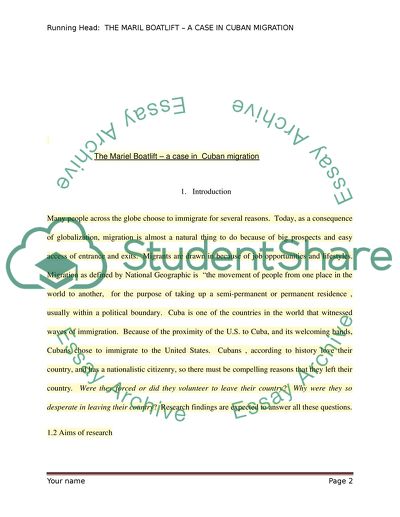Cite this document
(“The Mariel Boatlift: Cuban Migration Essay Example | Topics and Well Written Essays - 4000 words - 1”, n.d.)
The Mariel Boatlift: Cuban Migration Essay Example | Topics and Well Written Essays - 4000 words - 1. Retrieved from https://studentshare.org/social-science/1856846-int-388-cuban-migration-to-the-united-states
The Mariel Boatlift: Cuban Migration Essay Example | Topics and Well Written Essays - 4000 words - 1. Retrieved from https://studentshare.org/social-science/1856846-int-388-cuban-migration-to-the-united-states
(The Mariel Boatlift: Cuban Migration Essay Example | Topics and Well Written Essays - 4000 Words - 1)
The Mariel Boatlift: Cuban Migration Essay Example | Topics and Well Written Essays - 4000 Words - 1. https://studentshare.org/social-science/1856846-int-388-cuban-migration-to-the-united-states.
The Mariel Boatlift: Cuban Migration Essay Example | Topics and Well Written Essays - 4000 Words - 1. https://studentshare.org/social-science/1856846-int-388-cuban-migration-to-the-united-states.
“The Mariel Boatlift: Cuban Migration Essay Example | Topics and Well Written Essays - 4000 Words - 1”, n.d. https://studentshare.org/social-science/1856846-int-388-cuban-migration-to-the-united-states.


